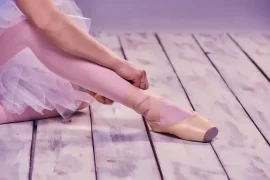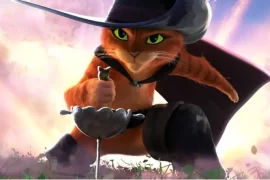“The difference between party Marxists and a private Marxist like me is that others think they have pocketed the truth, whereas I am always in search of truth.” — Mrinal Sen
The renowned filmmaker Mrinal Sen was one of the pioneers of the Indian New Wave cinema movement. He is widely regarded as one of the most influential filmmakers in the history of Indian cinema, and his films are known for their realism, social commentary, and political themes. Sen’s contribution to Indian cinema is immeasurable, and his legacy continues to inspire generations of filmmakers around the world.
Early Life and Career
Born on May 14, 1923, in Faridpur, British India (now Bangladesh), Mrinal Sen started his career as a medical representative.
Working for a pharmaceutical company in Kanpur, Mrinal had always been fascinated by the art of cinema, and had even written extensively on its aesthetics. However, he found himself feeling unfulfilled in his job and yearning for a career in the film industry. It was during a business trip to Jhansi that he had his epiphany moment.
In the privacy of his hotel room, Mrinal had a heart-to-heart conversation with himself in front of a mirror, confronting the reality of his situation and his unfulfilled aspirations. The emotional weight of his decision hit him hard, and he found himself crying like a child. But he knew what he had to do.
After three days of contemplation, Mrinal sent a long telegram to the management in Bombay and resigned from his job. It was a bold move, but he knew that he needed to follow his dreams and pursue his passion for film-making.

Mrinal Sen’s Key Films
Mrinal Sen was a prolific filmmaker who made over 30 films over the course of his career. He is considered one of the pioneers of the Indian New Wave, and his films are known for their social realism and political commentary.
Here are some of his most notable films, along with brief plot summaries and critical reception:
Bhuvan Shome (1969): A retired railway officer goes on a hunting trip to Gujarat, where he is exposed to the beauty of the countryside and the simple lives of the people who live there. The film is a gentle critique of the urban-rural divide in India.
It took a decade to bring Bhuvan Shome to fruition due to lack of producer. Despite having to borrow Rs 150,000 from Film Finance Corporation and not having high expectations for its commercial success, the film went on to become a massive hit.
Mrigayaa (1976): A tribal woman is hunted by a group of hunters for sport. The film is a powerful indictment of colonialism and the exploitation of tribal peoples.
Akaler Sandhane (1980): A group of people are trapped in a train during a power outage. The film is a metaphor for the political and social turmoil of India in the 1970s.
Ek Din Pratidin (1979): A middle-class couple’s lives are turned upside down when the wife is diagnosed with cancer. The film is a sensitive and moving portrayal of the human cost of illness.
Padatik (1973): A young man joins the Naxalite movement in West Bengal. The film is a powerful and realistic depiction of the violence and bloodshed of the Naxalite uprising.

Interview (1971): A young woman is interviewed for a job, and the conversation reveals the social and political tensions of the time.
Calcutta 71 (1972): A group of young people are caught up in the violence and unrest of the Naxalite uprising.
Chorus (1974): A group of people from different walks of life come together to sing a song, and the process of creating the song becomes a metaphor for the power of community.
Parashuram (1978): A man with a troubled past returns to his village, and his presence sets off a chain of events that leads to violence and tragedy.
And Quiet Rolls the Dawn (1979): A young woman is married off to an older man, and she struggles to adjust to her new life.
Filmmaking Style and Themes

Mrinal Sen’s films were known for their realistic portrayal of life, and he often used non-professional actors to give his films a sense of authenticity. His films dealt with a wide range of social and political issues, such as poverty, inequality, corruption, and the struggles of the working class. He was a master of satire and often used humor to highlight the absurdity of the social and political systems.
Sen’s style is characterized by his use of location, mise-en-scène, and editing techniques. He often shot his films on location, which gave them a gritty realism that was unprecedented in Indian cinema. He also used mise-en-scène to create powerful visual images that conveyed the social and political themes of his films. For example, in his film Bhuvan Shome, he used the image of a train to represent the journey from the urban to the rural, and from the modern to the traditional.
Sen’s editing techniques were also innovative. He often used jump cuts and montage to create a sense of urgency and tension in his films. For example, in his film Akaler Sandhane, he used jump cuts to create a sense of claustrophobia and panic as the characters are trapped in a train during a power outage.
Sen’s films often deal with social inequality, poverty, and political unrest. He was a committed socialist and believed that cinema could be used to raise awareness of these issues. For example, his film Padatik is a powerful indictment of the Naxalite uprising in West Bengal.
Buddhadeb Dasgupta, a renowned filmmaker, shared in an interview with Frontline that Mrinal Sen’s dedication to experimentation is a noteworthy aspect of his work. Despite experiencing failures along the way, Mrinal Sen never let that discourage him from continuing to explore new techniques and ideas.
Sen’s work was influenced by European and Soviet cinema. He was particularly influenced by the work of Italian neorealist filmmakers such as Roberto Rossellini and Vittorio De Sica. He also admired the work of Soviet filmmakers such as Sergei Eisenstein and Dziga Vertov.

Awards and Recognition
Mrinal Sen’s contribution to Indian cinema was widely recognized, and he received numerous awards and honors throughout his career. He won the National Film Award for Best Director four times, and his films were screened and awarded at various international film festivals, including Cannes, Venice, Berlin, and Moscow. In 1983, he was awarded the Padma Bhushan, India’s third-highest civilian award, and in 2003, he received the Dadasaheb Phalke Award, the highest honor in Indian cinema.
Legacy of Mrinal Sen
Mrinal Sen’s films continue to inspire generations of filmmakers, both in India and around the world. He was a pioneer of the Indian New Wave cinema movement and paved the way for a new generation of filmmakers who focused on realism and social commentary in their movies. His films continue to be relevant today, and his legacy as a master filmmaker lives on.
Personality
Kunal Sen’s description of his father, Mrinal Sen, reveals a charismatic and sociable personality. Mrinal Sen’s love for talking and his ability to captivate his listeners with an endless supply of anecdotes suggest that he was a great storyteller with a keen sense of humour. His infectious excitement likely made him a favourite among his friends, who Kunal describes as a “colourful array” of people.
Summary
Mrinal Sen was a master filmmaker and one of the most influential figures in the history of Indian cinema. He used his films as a medium to highlight the social and political issues of his time, and his legacy continues to inspire generations of filmmakers around the world. Through his films, he gave voice to the marginalized and oppressed, and his work remains a testament to the power of cinema as a tool for social change.







